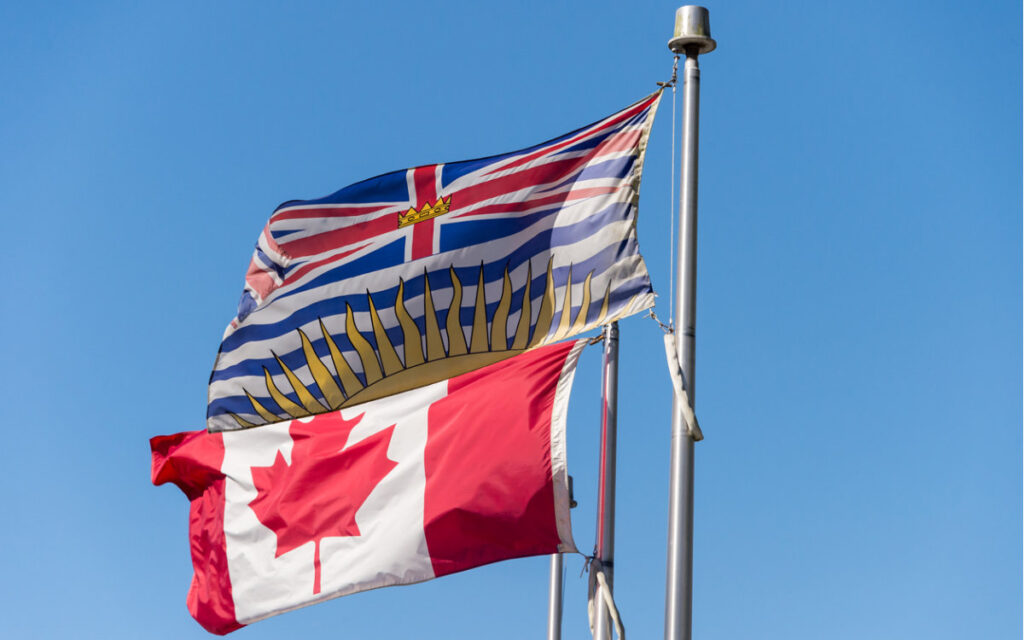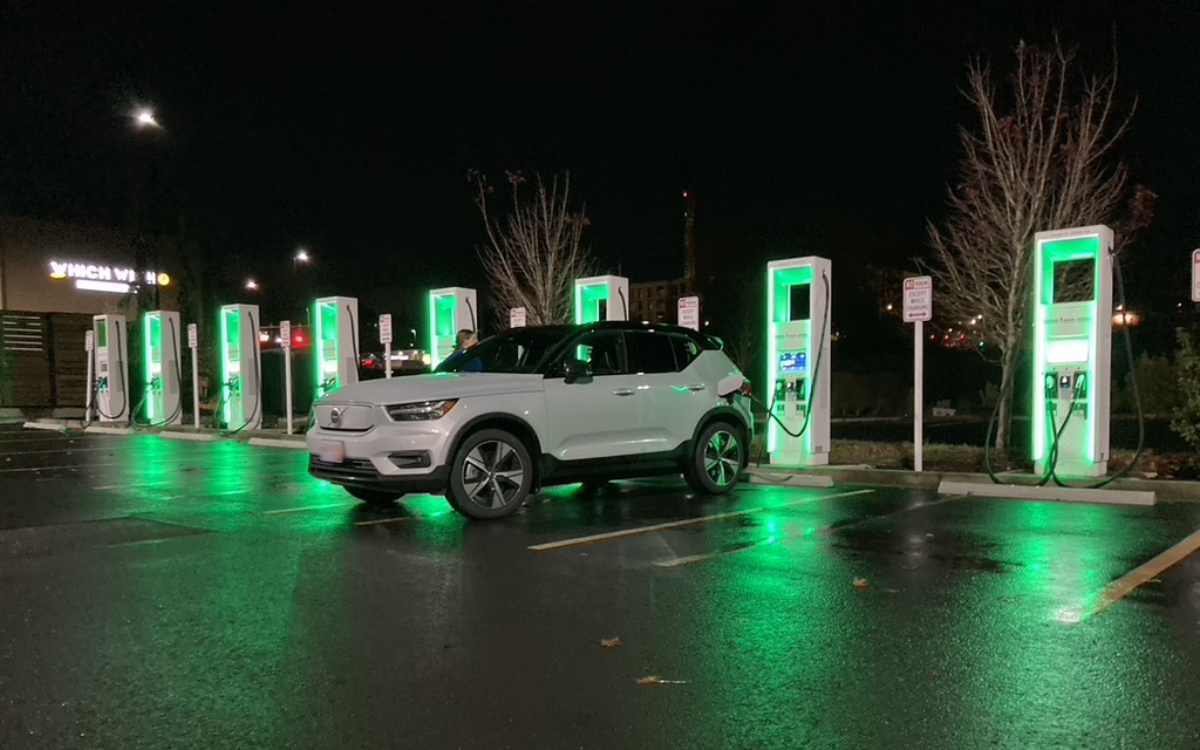This integration would have made sense in the early stages of the industry. Why is Tesla opening the patents now? Why not from the beginning? Is Tesla’s NACS just another example of a corporation trying to gain market share while creating additional confusion in the market, wonders LeadingAhead’s Maxime Charron.
Ford, GM, Rivian, and Volvo last week announced they’ll be moving forward with the Tesla connector (NACS for some) for their future generation models starting in 2025.
Many in the EV space have positively welcomed this news from EV experts to Tesla “fans” believing it would be best for the EV industry, hyping the large number of Superchargers deployed across North America and its ease of use.
But is it good for the industry?
Admittedly, I’m still wrapping my head around how a private company can claim a “Standard.” But I’ve taken a step back to reflect on how it could affect the industry on a short and long-term basis.
The Technology
Currently, Tesla has the advantage of managing its own charging infrastructure as well as its vehicles as a full-service, proprietary system.
Without a doubt, the “plug-and-charge” experience is far better than pulling out any app or tapping a credit card to get a charging session started. This is possible because Tesla owns and operates both systems.
Tesla designed the charging port on all Tesla models to be located on the rear corner of the driver’s side. This is great for Tesla drivers as this simple spec made it possible to design all Supercharger locations to be accessible for drivers to reverse into the stall and use the driver side charging unit.
Tesla uses load sharing at its Superchargers. This means that even a Supercharger site that is advertising a 150kW or 250kW charge could provide only 30-50kW when all charging posts are being used depending on the generation of the Supercharger.
In other words, this charging infrastructure architecture has pros and cons. It allows everyone to charge without creating line-ups (most of the time) but is also false advertising as during peak times, the likelihood of getting a higher charging rate (150kW+) is fairly low.
The Tesla plug also only carries a 400V platform which means a lot of new batteries based on 800v and 900v will not get the full kW rate they are capable of.
Comparatively, a 350kW EVGo or Electrify America site will always provide a minimum of 150kW per charging station. They are definitely more Superchargers ports in numbers, however the amount of non-Tesla DCFC sites coming up within the next 5 years is overly underestimated. I’ve personally driven from Vancouver to Los Angeles, passing by Las Vegas 4 times in the last 2 years in a Volvo XC40 recharge without any issues using Electrify America, EVgo stations, and hotel overnight charging.
Potential Issues
In sharing the Tesla connector (NACS) with other manufacturers and slowly opening the Supercharger network to all brands with the CCS Magic Dock adaptor, Tesla could be in for a reality check.
The first issue is that GM, Ford, Rivian, and other OEMs adopt the NACS without proper the adequate code integration necessary to initiate a charging session. This would result in multiple charging session failures and frustrated drivers.
The second potential and main challenge is cable length. Tesla’s short cable may create pure chaos at the Supercharger sites when they become accessible to non-Tesla vehicles. Many Superchargers can be seen with dangerously exposed cables due to drivers pulling and stretching the cable casing.
Right now, it’s common to see non-Tesla brands take up two or three Supercharger stalls just to reach the charging port. This will continue to be an issue unless all OEMs who integrate the NACS decide to standardize and move the charging port to the back end of the driver side.
But, even if all OEMs were to move the charging port to the left side, it fails to account for curbside charging, which will play a major role in the electrification of transportation. My Polestar with the charging port on the driver’s side is an absolute nightmare when using a curbside charging station. In Europe, driver-side ports are a non-issue because parallel parking against street traffic is allowed. But it poses a problem in North America.
Speaking of international jurisdictions, if the Tesla connector is superior, why hasn’t Tesla pushed its charging port in other countries? China uses GB/T and Europe uses Type 2 (CCS2) and, for the last few years, Tesla has been selling vehicles equipped with GB/T and CCS2, not its NACS port.
The Business Case (Bigger picture)
More interoperability is better for the industry. Having multiple charge point operators available increases competition, allowing drivers to choose their preferred network. On the flip side, there are many reasons why Tesla would rather remain the dominant player, using its own charging standard.
First, it allows Tesla to avoid paying large sums required to retrofit all its previous charging stations (around 18,000) with CCS connectors or Magic Dock as they had to do in Europe as well as incorporating CCS into its North American vehicles. It also makes it easier for Tesla to claim the Tesla plug is no longer a “proprietary” standard thereby easing access to public money funding.
And, should the NACS become the dominant connector in North America, it creates an additional barrier of entry for Chinese and European manufacturers unless they comply. Could this be a play for the American OEMs to get together and secure additional market share by making it harder for foreign competition?
The most important point to consider is Tesla’s monopoly over the market. With enough NACS partnerships, Tesla could easily control the price of charging and make Supercharging much more expensive than it already is. For other OEMs, it would be expensive patches, software upgrades, and other added cost to keep up with the Superchargers new technology which would be free for Tesla owners.
For example, at the Arroyo Charging Hub in Pasadena, CA there is a mix of Superchargers and Tritium 175kW / 50kW. Some Tesla drivers were using the universal Tritium charging stations. Why? The Superchargers were priced at $0.40/kWh whereas the Tritium units, operated by Pasadena Power and Water, were priced at $0.15/kWh.
On top of the increased profit on charging, Tesla will be able to cash in on an enormous amount of carbon credits (LCFS) attached to its Superchargers available in various states and provinces, providing another quick pathway to a monopoly via the carbon credit market.
Wrap it up!
One of the big risks for OEMs moving ahead with NACS is the lack of an unbiased regulatory body.
For an industry standard to be successful, it requires a not-for-profit organization or government entity to supervise the evolution of the standard and avoid providing a competitive advantage to one private company over another.
In this case, Tesla, a very much for-profit organization, would be the governing body giving themselves a complete monopoly on charging standards that aren’t overseen by a non-competitive organization, yet.
Ultimately it doesn’t matter if it’s a CCS or NACS, but there is an overwhelming need for a nonpartisan organization to regulate the market while keeping it competitive. Finding a charging plug standard that people can rely on is crucial to meet the 100 percent new EV sales goal by 2035 as this is only adding confusion for consumers.




